Abstract
The cytotoxicity of plasma from patients with various types of liver disease to rabbit hepatocytes maintained in vitro has been investigated using a microcytotoxicity assay system. Plasma from patients with fulminant hepatic failure and uncomplicated viral hepatitis showed significant cytotoxicity compared to controls. The cytotoxic effect of plasma from patients with fulminant hepatic failure was reduced by charcoal haemoperfusion, or heating and dialysis. The bile acids chenodeoxycholic acid and lithocholic acid were cytotoxic when added to control human plasma. Such toxic factors may be responsible for the delay in liver regeneration often seen in patients with fulminant hepatic failure.
Full text
PDF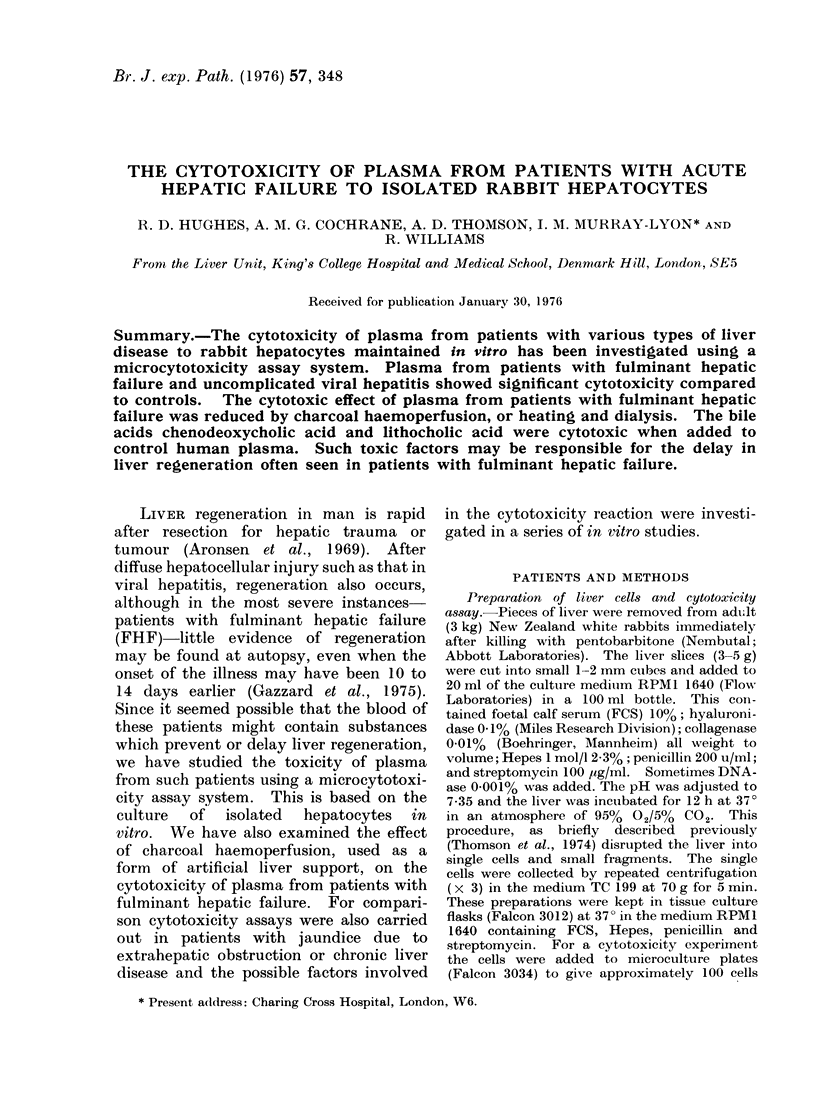
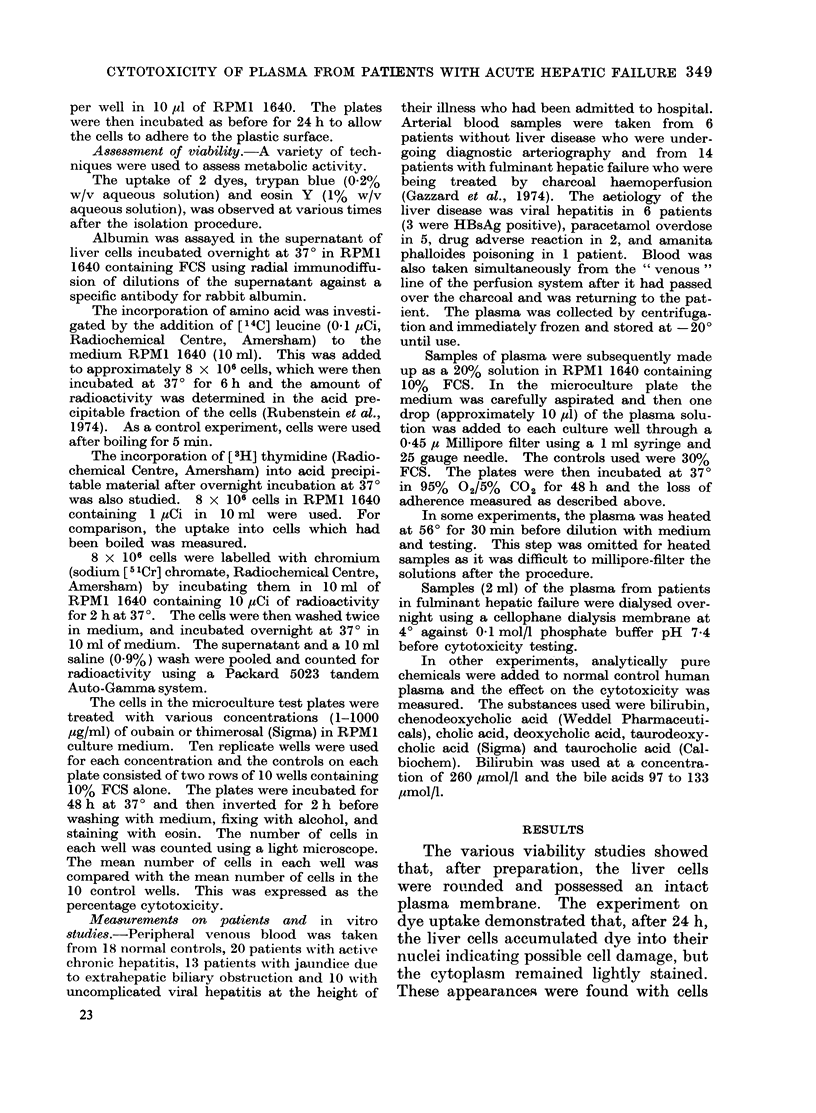
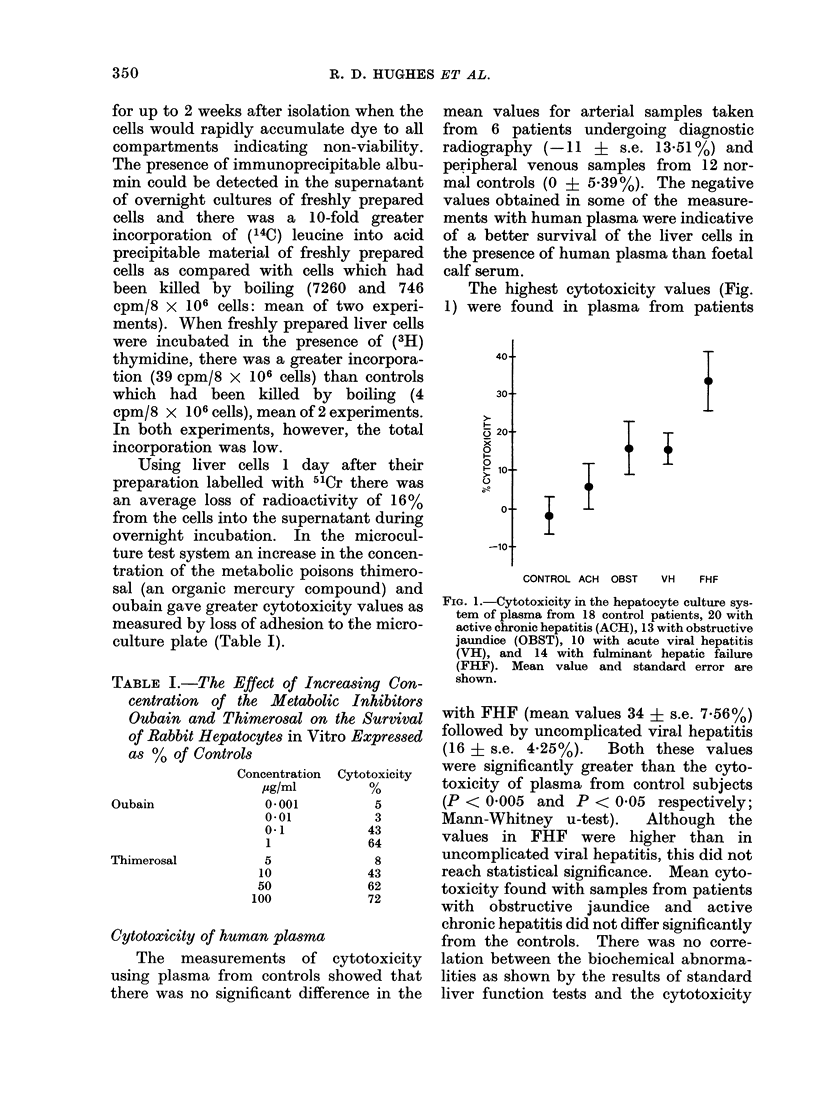
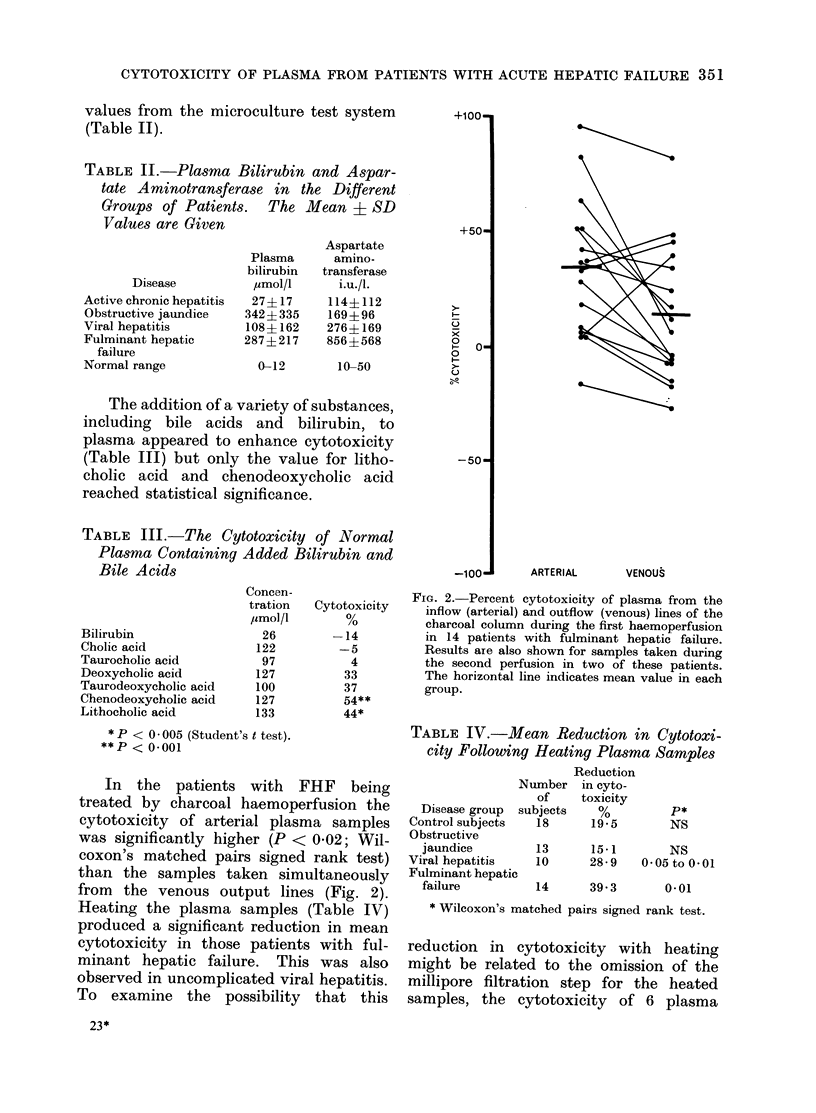
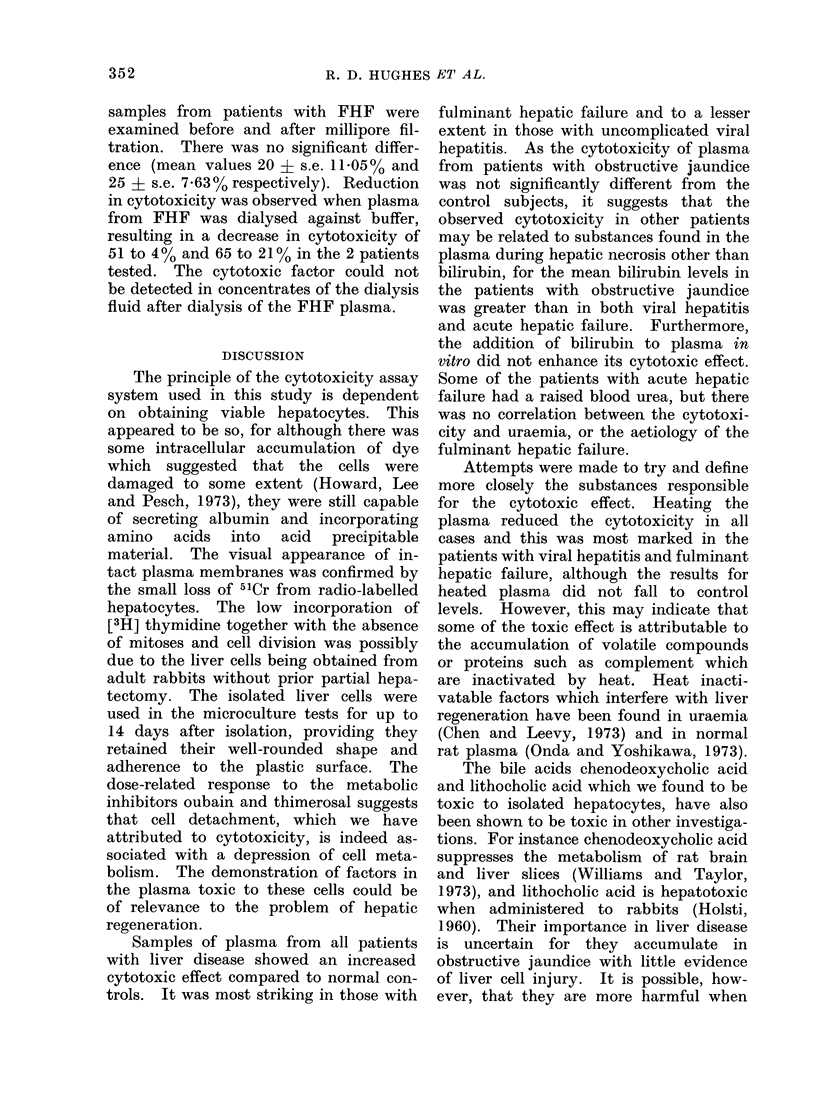
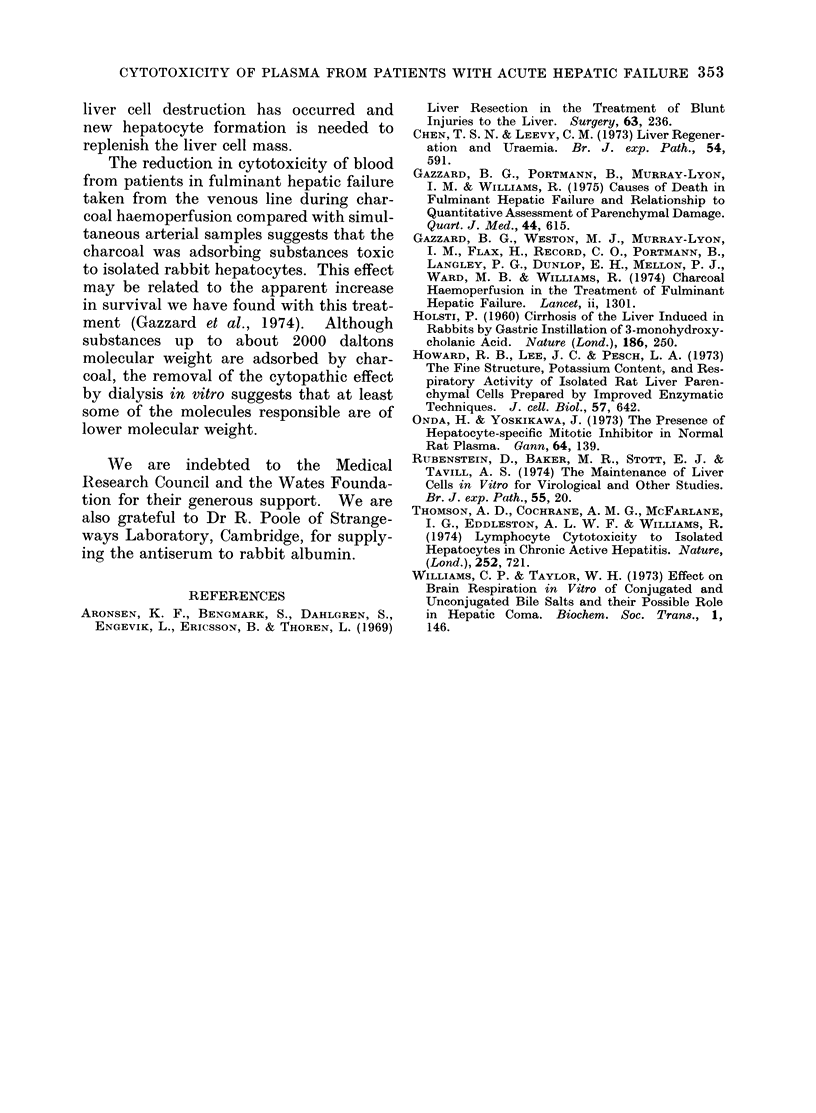
Selected References
These references are in PubMed. This may not be the complete list of references from this article.
- Chen T. S., Leevy C. M. Liver regeneration and uraemia. Br J Exp Pathol. 1973 Dec;54(6):591–596. [PMC free article] [PubMed] [Google Scholar]
- Gazzard B. G., Portmann B., Murray-Lyon I. M., Williams R. Causes of death in fulminant hepatic failure and relationship to quantitative histological assessment of parenchymal damage. Q J Med. 1975 Oct;44(176):615–626. [PubMed] [Google Scholar]
- Gazzard B. G., Weston M. J., Murray-Lyon I. M., Flax H., Record C. O., Williams R., Portmann B., Langley P. G., Dunlop E. H., Mellon P. J. Charcoal haemoperfusion in the treatment of fulminant hepatic failure. Lancet. 1974 Jun 29;1(7870):1301–1307. doi: 10.1016/s0140-6736(74)90678-3. [DOI] [PubMed] [Google Scholar]
- Howard R. B., Lee J. C., Pesch L. A. The fine structure, potassium content, and respiratory activity of isolated rat liver parenchymal cells prepared by improved enzymatic techniques. J Cell Biol. 1973 Jun;57(3):642–658. doi: 10.1083/jcb.57.3.642. [DOI] [PMC free article] [PubMed] [Google Scholar]
- Onda H., Yoshikawa J. Presence of hepatocyte-specific mitotic inhibitor in normal rat plasma. Gan. 1973 Apr;64(2):139–149. [PubMed] [Google Scholar]
- Rubenstein D., Baker M. R., Stott E. J., Tavill A. S. The maintenance of liver cells in vitro for virological and other studies. Br J Exp Pathol. 1974 Feb;55(1):20–25. [PMC free article] [PubMed] [Google Scholar]
- STEWART F. S., PEARSON A. E. Estimation of mouse tumour blood volumes employing a radioactive isotope technique. Nature. 1960 Apr 16;186:250–251. doi: 10.1038/186250b0. [DOI] [PubMed] [Google Scholar]
- Thomson A. D., Cochrane M. A., McFarlane I. G., Eddleston A. L., Williams R. Lymphocyte cytotoxicity to isolated hepatocytes in chronic active hepatitis. Nature. 1974 Dec 20;252(5485):721–722. doi: 10.1038/252721a0. [DOI] [PubMed] [Google Scholar]


